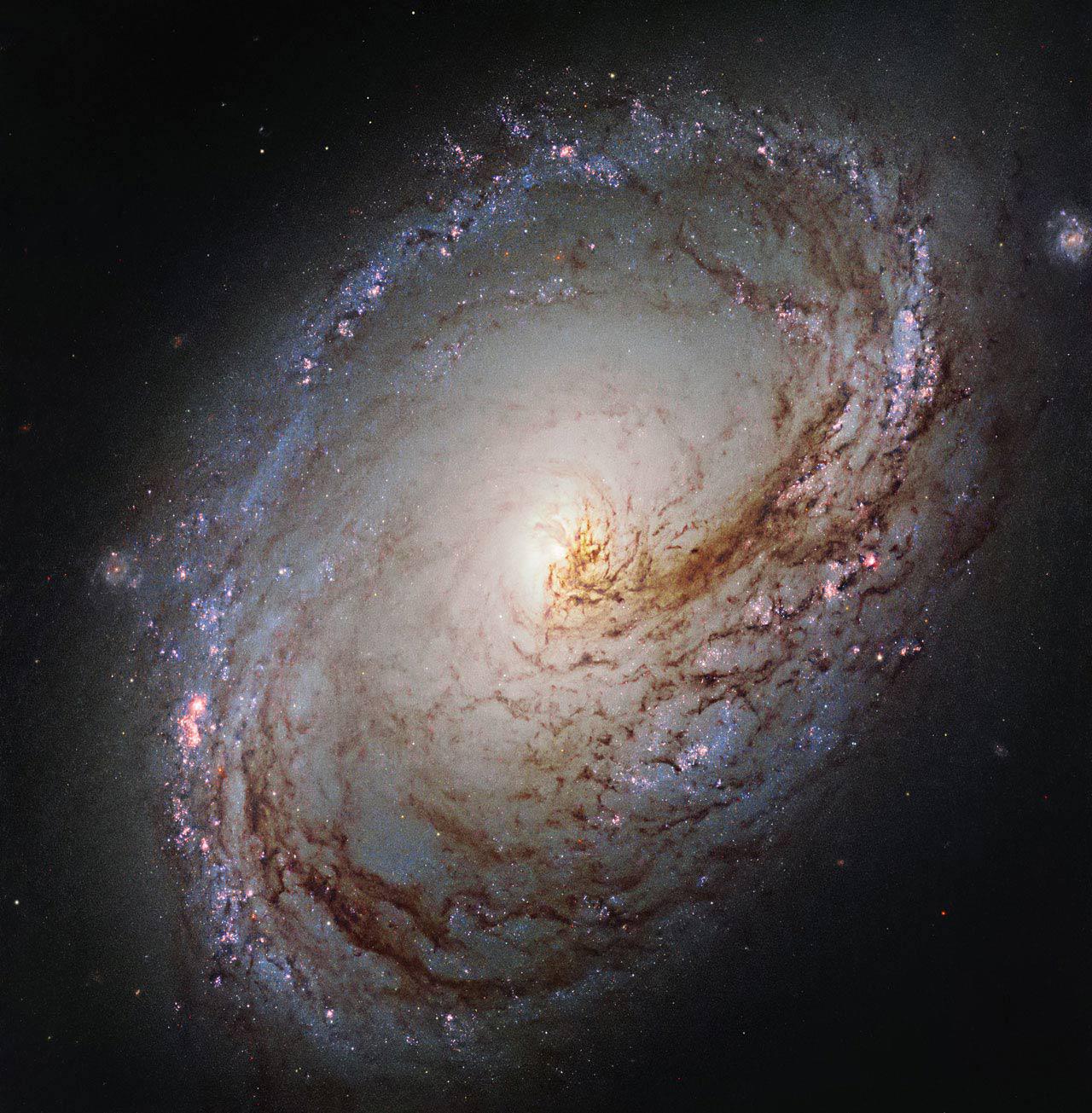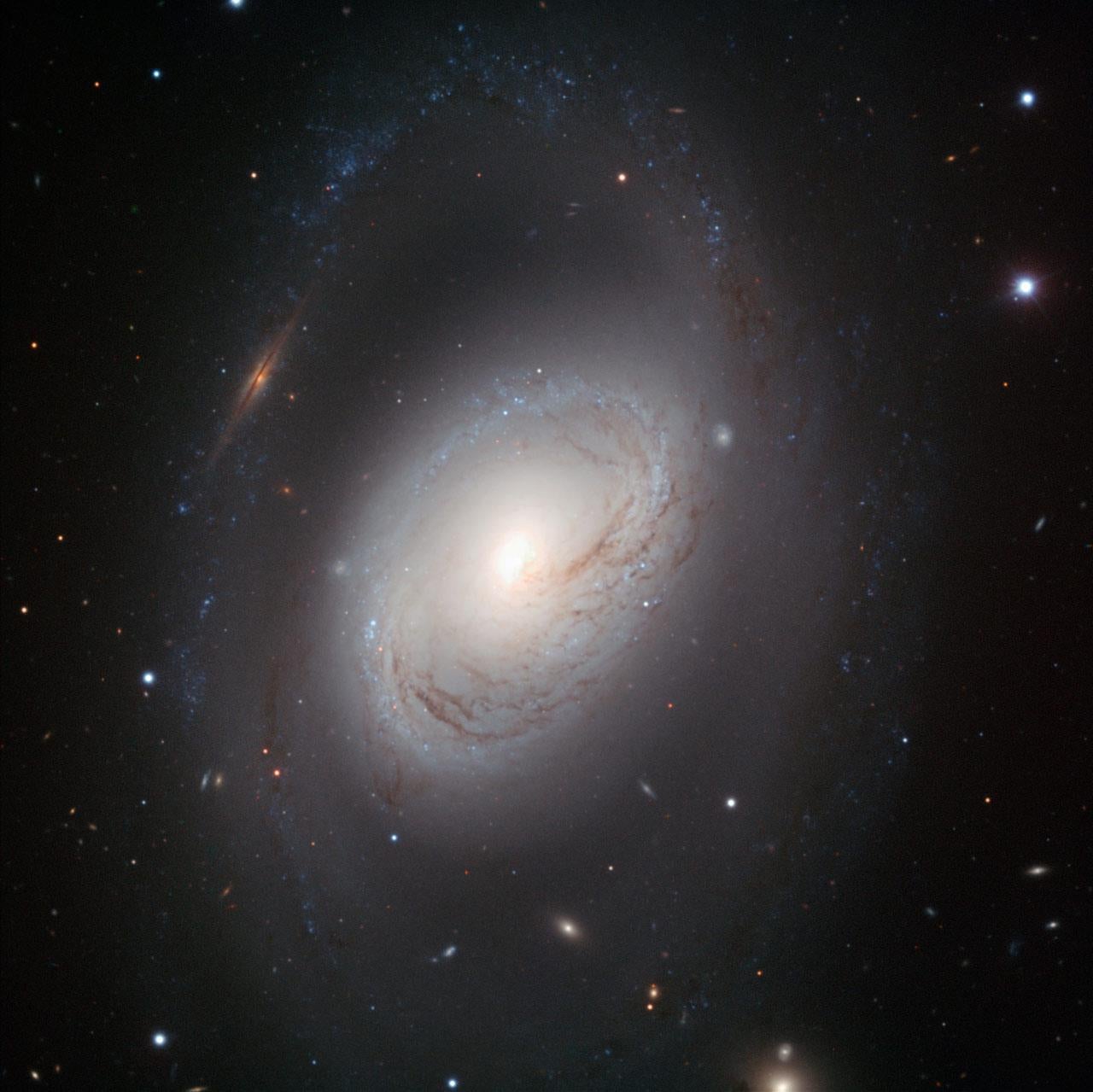In galactic astronomy, 30 million light-years is considered “close by.” It’s 300 quintillion kilometers, but hey, who’s counting?
So, given that, check out this spectacular Hubble Space Telescope image of the “close by” galaxy M96:

Photo by ESA/Hubble & NASA and the LEGUS Team; Acknowledgement: R. Gendler
Yow!
M96 is a spiral galaxy, similar to our Milky Way. It’s roughly the same size, 100,000 light-years across, and has a central bulge of old red stars and spiral arms dotted with young blue stars and pink-red gas clouds.
Unlike our Milky Way, which has a pretty well-organized spiral pattern, M96 is … odd. The dust certainly traces a lovely if mottled spiral going right into the nucleus (stronger on the right than the left, which means the right side is the side tipped toward us). But the luminous blue stars together with their gas clouds seem to trace more of a circular pattern.
What could do that? Well, it turns out M96 is part of a small clutch of galaxies called the M96 Group (sigh), and they are close enough to each other to affect the others gravitationally. M95 is about half M96’s size, easily large enough to poke and prod it.
That’s messed up the galaxy’s arms. You can see this even better in a wider view taken by the Very Large Telescope a few years back:

Photo by ESO/Oleg Maliy
Not bad, eh? The two images are oriented the same way (note the dust band going into the nucleus in both shots), but VLT has a field of view several times wider. M96 has a pair of far-flung arms, above and below, and the one above is pretty asymmetric. It has vigorous star formation going on (note the patchy blue knots of bright massive stars—they don’t live long, so we know star formation here was recent, in the past few tens of millions of years) whereas the other one doesn’t, a clear sign that another galaxy yanked on it.
I love that edge-on spiral seen to the upper left, almost perfectly aligned with the spiral arm of M96. That’s a coincidence; it’s probably five or more times farther away, the dust in M96 scattering away the bluer light, making the more distant galaxy highly reddened.
There are lots of background galaxies in these images. Click the pix to get the bigger versions and play around looking for them. It’s fun.
I love it when big ‘scopes check out our close neighbors; the detail is stunning. Of course, when I say detail, I’m talking about features that crush our brains into dust with their size: clouds hundreds of light years across, arms ten thousand light years wide.
Astronomy messes with your sense of scale. The Universe is big, and we are not. But then, our brains invented math and science that let us understand these scales, so honestly, in my opinion, we are kinda big in our way.